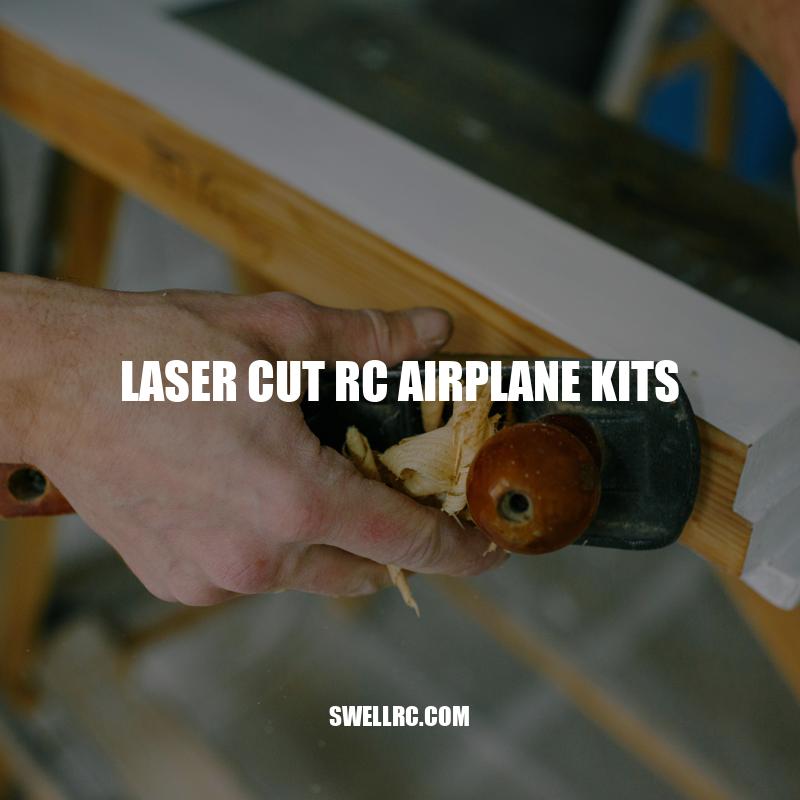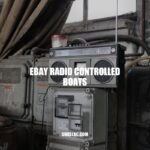Precision and Fun: Laser Cut RC Airplane Kits
Building model airplanes can be a fun and rewarding hobby for enthusiasts of all ages. For those who are looking for a challenge, there are laser cut RC airplane kits available that can provide a higher degree of precision and accuracy in the construction process. These kits consist of accurately laser-cut pieces of balsa wood or other materials that are precisely cut to fit the components of the final product. The use of lasers in the cutting process ensures that each piece is uniform in size and shape, making it much easier to assemble the model airplane. Because of the accuracy of the cutting process, the final product produced with laser cut RC airplane kits is often considered to be of very high quality. The level of precision also allows model airplane enthusiasts to create highly detailed models that are true to life to an astonishing degree. If you are interested in building your own model airplane with a high degree of precision, a laser cut RC airplane kit may be exactly what you need. With the right tools and a bit of patience, even beginners can get impressive results with these kits, which can lead to a great sense of satisfaction and pride in their accomplishments.
Advantages of Laser Cut RC Airplane Kits
There are several advantages to using laser cut RC airplane kits, including:
- Accuracy and Precision: Laser cutting ensures that each piece is cut precisely, resulting in a more accurate and better-fitting final product.
- Easy to Assemble: Because the pieces are so accurately cut, they are much easier to assemble, especially for beginners.
- Customization: Laser cutting allows for a higher degree of customization, and parts can be designed to fit a specific need or purpose.
- Increased Quality: The level of precision involved in the cutting process often leads to a higher quality final product.
Some popular websites that offer a range of laser cut RC airplane kits include Motion RC, HobbyKing, and Flite Test. These websites offer a variety of options for different skill levels and interests, as well as resources such as forums, instructional videos, and advice from experienced model airplane enthusiasts. Some of the most popular laser cut RC airplane kits include:
| Model | Description | Difficulty Level |
|---|---|---|
| Balsa USA 1/4 Fokker D.VII | A scale model of the famous German fighter plane from WWI | Advanced |
| Flite Test Mighty Mini Tiny Trainer | A small and simple trainer airplane for beginners | Beginner |
| Balsa USA 1/3 Nieuport 17 | A large and detailed model of a classic WWI aircraft | Advanced |
Overall, laser cut RC airplane kits provide an excellent way for enthusiasts to build high-quality model airplanes with a great deal of precision and accuracy. With the many advantages of these kits, model airplane enthusiasts of all levels can find a kit that meets their needs and interests.
What are the advantages and disadvantages of laser cut?
Laser cutting has several advantages, such as cutting through all materials, no tooling costs, high accuracy, and precision. However, it is costly to maintain.
Materials Used in Laser Cut RC Airplane Kits
The materials used in laser cut RC airplane kits can vary depending on the model, but they are typically made from balsa wood. However, other materials may be used depending on the desired use of the airplane. Some common materials used in laser cut RC airplane kits include:
- Balsa Wood: A light and strong wood that is easy to work with, making it a great choice for beginners.
- Plywood: A heavier and denser wood that is ideal for larger and more complex airplane models.
- Carbon Fiber: A strong and lightweight material that is often used in high-performance airplane models.
- Foam: A versatile material that can be used in both beginner and advanced models. Foam is lightweight and relatively cheap, making it a good option for experimentation and testing.
Interestingly, balsa wood was not always used in model airplane construction. In the early days of model airplanes, builders used a variety of materials, including bamboo, paper, and even animal bones! However, balsa wood quickly became popular due to its light weight and strength, and it has remained a favorite of model airplane enthusiasts ever since.
There are many websites and stores that offer laser cut RC airplane kits made from various materials. Some popular options include the Flite Test Versa Wing made with foam, the Great Planes Ultimate Biplane made with balsa wood, and the HobbyKing Sbach 342 made with plywood. It is important to choose a material that suits the type of model being built and the desired level of performance.
Table below shows some of the advantages and disadvantages of each material:
| Material | Advantages | Disadvantages |
|---|---|---|
| Balsa Wood | Lightweight, strong, easy to work with | Can be brittle, less durable than other materials |
| Plywood | Durable, stronger than balsa wood | Heavier, can be more difficult to work with |
| Carbon Fiber | Strong, lightweight, ideal for high-performance models | Expensive, difficult to work with |
| Foam | Lightweight, versatile, relatively cheap | Not as strong or durable as other materials |
In conclusion, the materials used in laser cut RC airplane kits can have a significant impact on the final product. Each material has its own advantages and disadvantages, and it is important to choose one that meets the needs of the model and the builder. From lightweight and easy-to-work-with balsa wood to versatile and cheap foam, there are many options to choose from when building an RC airplane.
What materials are used to make RC planes?
Model aircrafts are made using various materials such as paper, foam board, depron, balsa wood, coroplast sheets, and composite materials like fiberglass or carbon fiber. For more information on building RC planes and the materials required, you can visit websites like Flite Test or HobbyKing.
Conclusion
Building an RC airplane from a laser cut kit can be a fun and rewarding experience for enthusiasts of all skill levels. These kits offer greater accuracy and precision thanks to the use of lasers, leading to higher-quality finished products. The materials used in these kits can vary depending on the desired level of performance and the needs of the model. Choosing the right material is important to ensure that the airplane functions as desired. Building an RC airplane requires patience and attention to detail, but with the right tools and mindset, anyone can assemble their own flying machine.
It’s worth noting that laser cut RC airplane kits are not just for hobbyists. They can also be useful for students and teachers interested in STEM education. Building and assembling these kits can help students learn about aerodynamics, engineering and problem-solving in a fun and engaging way.
Finally, whether building an RC airplane for fun or for education, it’s important to prioritize safety. Always read and follow the instructions carefully, wear protective gear when necessary, and be careful when operating the airplane. With the right approach, building and flying an RC airplane can be both a challenging and rewarding endeavor.



